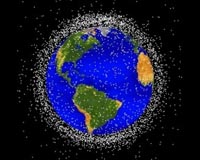 |
Washington DC (SPX) Apr 28, 2011 All this week, the National Nuclear Security Administration (NNSA) is highlighting its advanced supercomputing capabilities with a week of features demonstrating the science and technology work done by the Advanced Simulation and Computing (ASC) program. As part of that effort, NNSA launched a new and improved ASC webpage. This feature includes a new video on the NNSA's website that describes the role that NNSA plays in non-nuclear research. While preparing NNSA's supercomputing platforms for use as part of the stockpile stewardship program, NNSA's laboratories often allow ground breaking research and analysis into a wide variety of non-nuclear issues. As a result, NNSA's supercomputers have provided the nation the tools to tackle a wide variety of national challenges. For example, NNSA and Lawrence Livermore National Laboratory has announced that a team of computational physics and engineering experts have been using NNSA supercomputers to better understand the impact of space debris. Working in collaboration with Los Alamos National Laboratory and Sandia National Laboratories, the team developed a set of tools known as the Testbed for Space Situational Awareness (TESSA), they can simulate the position of objects in orbit and the detection of them by telescope and radar systems, helping to prevent a space disaster. In the future, the same technology can be used to enhance nuclear security by helping plan sensor operations and assessing the benefits of specific sensor systems, technologies, and data analysis techniques. "NNSA's efforts to maintain the safety, security and effectiveness of the nuclear stockpile without underground testing have yielded solutions to some of the most challenging issues that face our country," said Don Cook, NNSA's Deputy Administrator for Defense Programs. "From space debris to medical work to climate change, even to understanding the damage that caused the breakup of the Space Shuttle Columbia, NNSA has been able to support many important issues that impact the nation while implementing President Obama's nuclear security agenda." The development of the space debris modeling capability is one of many examples of the ways NNSA's supercomputers have enabled our laboratories to find solutions to broader national challenges. At Los Alamos National Laboratory, ASC code is being used for medical physics. MCNPX, a general-purpose Monte Carlo radiation transport code for modeling the interaction of radiation with the things it comes into contact with, is ideally suited for use in medical applications because of the accuracy of its physics models, the unique set of clinically relevant features, and the responsive support provided by the developers and the user community. LANL has used MCNP code to calculate dose distributions for brain tumor therapy at the MIT Nuclear Reactor. MCNP is a 3D, parallel, internationally respected, particle transport code that is used in medical physics and radiation health protection. Scientists were also able to help stabilize Roadrunner, an NNSA supercomputer at LANL, by running science-based applications before it was ready for use as part of the stockpile stewardship program. One application modeled HIV proteins, which led to a better understanding of how the AIDS virus replicates itself. That project could serve as the cornerstone to developing the first viable vaccine to protect people from HIV. Also at LANL, research to understand the potential influenza pandemic sweeping across a continent has been conducted. This research, supported by the Department of Homeland Security and LANL supercomputer time provided by the Institutional Computing and ASC programs, led to a cover article in the Proceedings of the National Academy of Sciences in April 2006 titled "Mitigation strategies for pandemic influenza in the United States." Researchers at Sandia National Laboratories played a key role in helping NASA determine the cause of the space shuttle Columbia disaster. Sandia analyses and experimental studies supported the position that foam debris shed from the fuel tank and impacting the orbiter wing during launch was the most probable cause of the wing damage that led to the breakup the Columbia. Sandia researchers used a variety of internal and external computer codes to help in the analysis, including computational fluid dynamics analyses for the orbiter at various altitudes along the trajectory, heat transfer predictions, calculations of plumes that simulated hot gas entering the wing, and material-response calculations of possible damaged wing leading edge and tile materials. Also, Sandia was recently selected as one of four institutions to develop new supercomputer prototype systems for the Defense Advanced Research Projects Agency (DARPA). To meet the increasing advanced computing needs for the Department of Defense, DARPA launched the Ubiquitous High Performance Computing (UHPC) program.
Share This Article With Planet Earth
Related Links National Nuclear Security Administration Space Technology News - Applications and Research
 UK Technology Scans The Skies For Space Hazards
UK Technology Scans The Skies For Space HazardsLondon, UK (SPX) Mar 08, 2011 UK space surveillance technology is being used in ESA's first co-ordinated space tracking campaign - part of a larger programme to provide up to date and accurate information on space hazards in Earth's orbit. These hazards stem from possible collisions between objects in orbit, harmful space weather and potential strikes by natural objects that cross Earth's orbit. UK involvement in the t ... read more |
|
| The content herein, unless otherwise known to be public domain, are Copyright 1995-2010 - SpaceDaily. AFP and UPI Wire Stories are copyright Agence France-Presse and United Press International. ESA Portal Reports are copyright European Space Agency. All NASA sourced material is public domain. Additional copyrights may apply in whole or part to other bona fide parties. Advertising does not imply endorsement,agreement or approval of any opinions, statements or information provided by SpaceDaily on any Web page published or hosted by SpaceDaily. Privacy Statement |